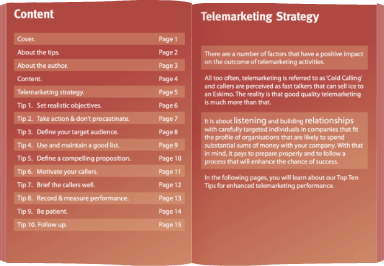We all know that it’s more expensive to win new business than to retain existing business and that you can effectively grow your bottom line by delighting your customer base thereby encouraging them to stay longer, spend more and recommend you to others.
So, what are our tips for Customers Service to grow your profitability and business?
-
Everyone needs to Learn How to Communicate
Nothing much happens without good communication. First impressions count towards your credibility so you need to understand how your front-facing staff comes across from the get-go. Everyone that interacts at some stage with your customers and prospects needs to be able to communicate and build rapport. That means from reception staff to sales reps to out of hours call answering and of course your customer service team.
-
Learn How to Ask Good Questions
Questions are essential to gain information and clarification. They also make the listener sound more interested in the talker. It shows customers and prospects that you care and reduces the chances of diagnosing the wrong solution. Questioning techniques are essential especially if you have the gift of the gab rather than the gift of listening. In stressful situations, asking good questions also gives you time to think and reduces the hesitation that can infuriate the other person.
-
Avoid Colloquialisms
I’ll never forget visiting Boots The Chemist back in the 90’s and being greeted at reception by a chap who proceeded to say ‘Ello M’Duck’. As it happens, he was extremely friendly but some visitors raised their eyebrows. I’m not particularly fond of being addressed as ‘love’ when being asked to hold the line. I was in a restaurant yesterday and wasn’t too pleased about being addressed as ‘sweetheart’! Colloquialisms are fine in context but it’s important to take care when it comes to dealing with customers.
-
Be a Great Listener
Linked to Number 2 above, listening is a skill. We should all probably listen more and talk less. That means listening actively and shutting out external distractions. Avoid checking emails when you’re in conversation with a client. Shut Facebook down! And show that you genuinely care and want to offer a solution rather than get them off the phone. People can hear when you’re not listening. Silence and pauses demonstrate thought and can allow angry customers to calm themselves. Take specific but concise notes on a pad and make sure you summarise understanding so as to show you’ve listened to their concerns. Check out our blog on Listening Techniques for more.
-
Learn How to Build Rapport
People buy from people they like and people they trust. Therefore, learning how to build rapport is essential in business and is a life skill. You can use techniques such as moderating tone, pace and volume to help you. Finding a frame of reference certainly aids rapport in a sales situation but will be ineffective if the customer is angry. That’s where genuine empathy comes in. Customers don’t want to feel they’re speaking to a scripted robot. They want personality and friendliness but take care not to slip into over-familiarity especially when dealing with complaints.
-
Manage Emotions and Develop Patience
Patience is definitely a virtue when it comes to customer service. You will need it. That also means managing your emotions when dealing with angry or abusive customers. A calm demeanour will calm most customers and make them feel more valued and respected. It will also help your own stress levels. And a good technique to deal with the inevitable stresses of customer service life is to remember to breathe. Deep breathing (not heavy breathing!) helps when presenting in sales situations too. It helps you naturally relax. If you’re more relaxed, you will think more clearly and be better able to satisfy your customer.
-
Get Your Body Language Right
Don’t forget body language. In telesales, they ‘say smile while you dial’. A smile emits positive energy and it’s also true for customer services but it depends on the circumstances of course. Smiling can be felt and perceived on the telephone. It radiates when face to face. It enhances customer experience. But take care when offering negative news. Equally, standing up makes you sound more authoritative and can often help when on the phone in more stressful situations. So, don’t forget the impact that proper body language and posture can have on your ability to provide good customer service.
-
Don’t Make Rash Decisions
When we’re under pressure, we can be guilty of rushing. Try to avoid saying things you’ll regret later at all costs. That’s especially the case if you promise something that you or the company cannot feasibly deliver. The customer most definitely wont thank you if you get it wrong. Nor will your management. The customer may well need the delivery tomorrow but if you agree when it’s unlikely and they commit to their customer, it sets off a chain reaction. Better to pause, check, be honest and give them a genuine answer of which you’re sure. The customer will never phone to thank you if they have to call to complain a second time.
-
Know Your Stuff
You’d think this is kind of obvious in a customer facing role. Ultimately, it’s hard to satisfy a customer if they know more than you. Nowadays, there’s all manner of product information online and it’s easy for a customer to do their research. So, devote sufficient time to not only knowing products and services but also processes, procedures and likely legal and other issues. You can’t know everything but you can make sure you keep abreast of potential issues. I once worked with a toy company that produced soft stress balls and the label tore off some of the rubber once removed. The customer service tam weren’t aware of the issue until retailers started complaining. Use downtime to gen up on products and, if you don’t know, ask a colleague.
-
Honesty is Generally the Best Policy
Being transparent (or as far as you can be) shows customers you care. When you’re more up front, you’re more likely to persuade customers to accept your recommendations. It’s especially crucial when the news you’re giving isn’t positive. Don’t hide the truth or make things up on the spot. Check with management how far the company is prepared to go to manage the situation and to satisfy the customer. But lying generally will not give you the desired outcome no matter how much pressure you’re under.
-
Keep Your Promises
Sometimes this is out of your hands but you need to know your level of empowerment within the company. What can you do and what can’t you do? If you can solve it immediately, do it. Manage customer expectations and don’t promise or hint at something that you ‘might’ be able to do if you know there’s a good chance it’s not possible. If you do that, it will damage your credibility and the company’s reputation and risk losing a customer.
-
Check that the Customer is Happy with your Solution
They may not be 100% happy every time but if they feel you’ve listened and tried, they will be ‘happier’. Double check after each offer, solution or proposal. Use ‘How does that sound’ or similar open questions to test acceptability of what you’ve suggested. Ultimately, a customer that goes away feeling you’ve not given them what they want will more likely look elsewhere for suppliers that can deliver. You can’t offer the earth or make a loss but you can find a balance where it’s win: win.
-
Be Flexible
Customer service is full of surprises. You need to be adaptable to be able to deal with what’s thrown at you. Go back to good listening skills and effective open questions when confronted with something you hadn’t anticipated. And keep an open mind. Just because this customer was difficult last time doesn’t mean they don’t have a valid concern this time. Customers hate rigidity in customer service. A robotic approach wins no friends. If it’s something you haven’t heard before or dealt with, don’t be afraid to go away and check then call back. Try to be as open as you can to options to satisfy what the customer needs.
-
Confidence Matters
If you’re positive and sound confident, the customer is likely to have a better experience. They are more likely to trust you (as long as it isn’t over-confidence) and accept your recommendations. They will also be less likely to go above your head to get what they want. Confidence is partly a mind-set. You’ve heard the expression I’m sure ‘if you think you can…..’ So, bring your A game to the table and demonstrate that you are in the driving seat and that you are the right person to talk to. Positive and compelling language is attractive to customers. That doesn’t mean the overuse of superlatives but you do need to be assertive. Who wants to speak to someone that’s boring, lacks energy and interest in them?
-
Manage Your Time
Customer service is a busy role and you have to handle multiple things at any one time. Multi-tasking is an everyday occurrence so you need good time management. There’s nothing that harms relationships more with customers than late responses when they have their own deadlines. How good are your organisational skills? What tools and support do you have to enhance your efficiency? How can you better plan ahead? Can the business provide FAQs to help you and to help customers to self-serve via the website? Can the business implement web chat to reduce drain on calls into the business? What systems do you have to help retrieve customer history? The better you manage time, the better the customer experience will be.
-
Walk a Mile in a Man’s Shoes
Put yourself in the customer’s position. If you were in their situation, how would you feel? That doesn’t mean you have to cave in, but it does mean that you should consider why they feel like they do. This is what empathy is all about. It will certainly help rapport and understanding and support the likelihood of them trading with you again despite the issue they brought to your door. Surveys show that customers who feel their complaint has been resolved well are more likely to be loyal and buy more than before the problem occurred. You generally don’t know what pressures they are under at work or even at home. So, try to look at it from their perspective for a moment.
-
Use Systems to Support your Decisions
Good systems support good decisions. That means that you always have access to the right information when you need it. That includes concise but accurate notes so you can refer to past conversations. You also need effective processes within the organisations. Earlier, we spoke about knowing your authority level in terms of empowerment. Having access to information when you need it speeds up decision-making and customers will thank you for that. That doesn’t mean you have to take a rigid approach though. The best customer service is where systems support decisions but don’t make them!
-
Learn from Mistakes
We all make mistakes. The key is to avoid making them over and over again. There is a great quote from Einstein about the definition of Insanity: Doing the same thing over and over again and expecting different results. Don’t let that happen to you in sales or customer service. If the approach didn’t work last time, it’s highly unlikely to work the next time. What could you have done differently? What could the business change? Who could have helped you? What knowledge were you missing? How could the business have prevented the situation?
-
Think Outside the Box
This isn’t another way of saying ‘making it up as you go along’. History is littered with maverick failures. You don’t want to become a rogue trader! But it does mean being analytical to consider all angles and perhaps suggest something that the customer may have not anticipated. It means providing solutions that gets around a problem or perhaps provides a temporary solution until the main issue is resolved. It removes rigidity that leads to customer alienation. Flexibility and thinking outside the box can encourage customers to recommend you and that can lead to more business.
-
Go The Extra Mile
We’re not suggesting this should be at every point for every customer interaction and for every client who spends more than £10 with you. A delighted customer is less likely to leave. Check out our blog on customer loyalty for great stats on that subject. You need to know your parameters and how far you can go and what you can do to find a solution that increases loyalty. A company like Richer Sounds is well-known in customer service circles for great customer service. A few years ago, I had the pleasure of judging on the WOW Awards. This is an organisation that encourages employers to catch employees doing the right thing and rewards great customer service. Richer Sounds won awards due to the way that they encouraged staff to really go the extra mile. There were of course other examples. A personal experience is another good example of this. My daughter bought her first car last year. It was a big thing for her and Lancaster St Albans really went out of their way to make the experience special. Check out the pictures below. That experience went on Facebook and we told everyone we knew. Great advertising and absolutely free. How can you go the extra mile for your customers?
If you’d like to know more about how GSA can help with Customer Service, inbound enquiry management or book a short customer service course, contact us now on 0845 658 8192 or use the form on this site.







